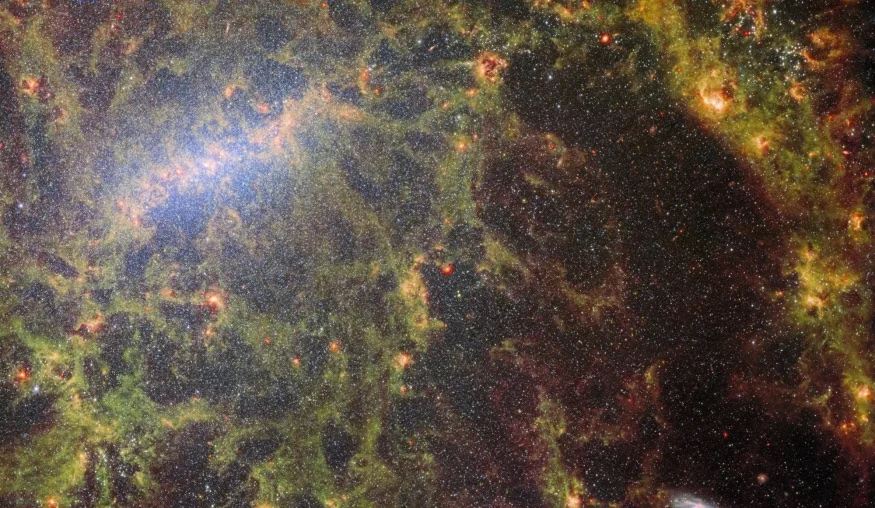James Webb telescope shows stars forming in the constellation Virgo
The James Webb Space Telescope (JWST) of NASA, the European Space Agency ESA and the Canadian Space Agency CSA can easily see through dust and gases with its infrared instruments. Therefore, the JWST can show images that we have never been able to see before.
The latest image shows the barred spiral galaxy NGC 5068, so named for the bright central bar in the upper left of the image. Webb’s image is a combination of infrared images taken by the telescope’s MIRI (Mid-Infrared Instrument) and NIRCam (Near-Infrared Camera) sensors.
The JWST easily sees through dust and gas, (Image source: ESA/Webb, NASA & CSA, J. Lee)
They have dedicated themselves to the galaxy in the constellation Virgo. It is about 17 million light-years from Earth. Because of the special capabilities of the JWST, we can see images that show the process of star formation.
Editor’s Recommendations
A look at the two frames that make up the composite shows different layers of the galaxy. How gizmodo reported, the glowing gas bubbles are newly formed stars.
A wispy web of dust and bright star clusters runs through the JWST image, revealing the spiral galaxy’s dusty structure. The glowing gas bubbles, which contain newly formed star clusters, can be seen particularly well.
The image of NGC 5068 becomes part of a collection of observations of star formation in nearby galaxies. Such observations are valuable to astronomers for two reasons. On the one hand, star formation forms the basis for many areas of astronomy.
By observing star formation in nearby galaxies, astronomers hope to make important scientific advances with some of the first available data from the JWST.
The second reason is that JWST’s observations build on other studies made with telescopes like Hubble and some of the world’s most powerful ground-based observatories.
So far, JWST has collected images of 19 nearby star-forming galaxies, which the astronomers then combined with catalogs of 10,000 star clusters from Hubble, spectroscopic mappings of 20,000 star-forming emission nebulae from the Very Large Telescope (VLT), and observations of 12,000 dark, dense molecular clouds that identified by the Atacama Large Millimeter/submillimeter Array (ALMA) could combine.
These combined observations cover the entire electromagnetic spectrum and offer astronomers unprecedented opportunities to look into the details of star formation.



